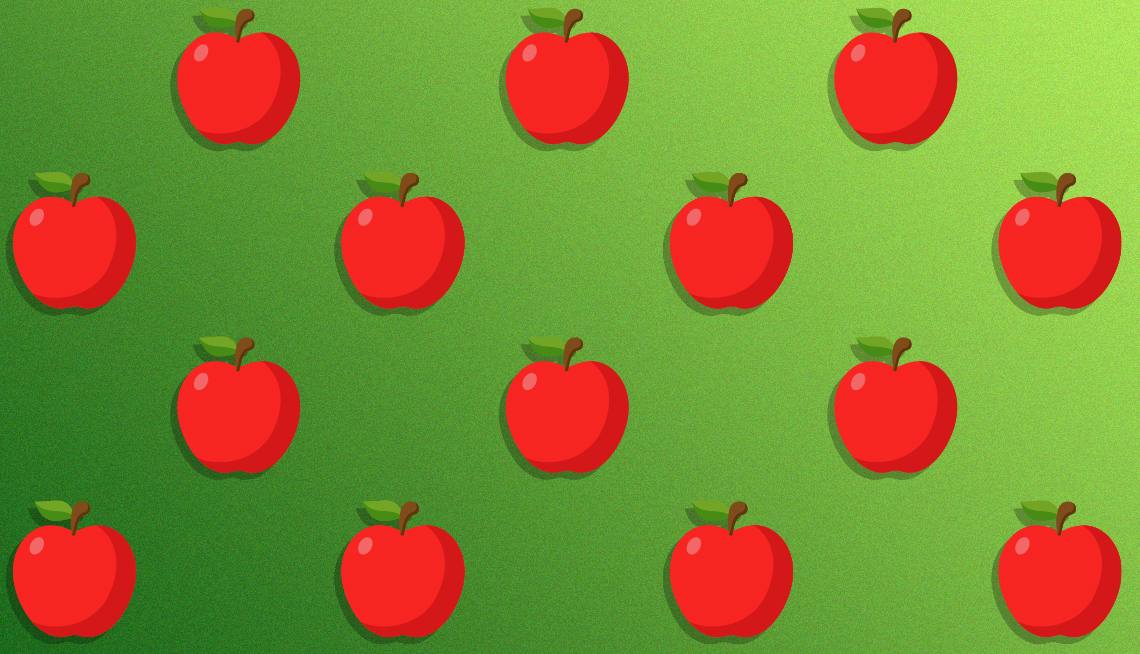
Modern health problems and solutions
- Select a language for the TTS:
- UK English Female
- UK English Male
- US English Female
- US English Male
- Australian Female
- Australian Male
- Language selected: (auto detect) - EN
Play all audios:

5. FOOD FAD BANDWAGON _My daughter is trying to convince me to join her on a fasting regimen. Smart or dumb?_ It depends on what that regimen looks like. Fasting has been linked to reduced
inflammation and, in animal studies, longevity. But restricting calories too severely can slow your metabolism and accelerate muscle loss. You’re probably fine starting with a 12-hour fast:
If you finish dinner at 7 p.m., don’t eat again until 7 a.m. That will reduce your overall calorie intake, give you time to digest and even allow the body to burn some fat for energy
overnight. But anything longer than that should probably start with a visit to your doctor, especially if you have any existing health concerns or take medication with food in the morning.
—Elizabeth DeRobertis, registered dietitian and certified diabetes educator, Scarsdale Medical Group, an affiliate of White Plains Hospital in New York 6. IS A COLONOSCOPY RISKY? _My doctor
says I should get a routine colonoscopy, but the headlines are conflicting. Should I book it?_ Yes. It could save your life. If you are at least 45 years of age and at average risk for
colorectal cancer, you should start regular screenings, which may include a colonoscopy, according to the American Cancer Society. People with a family history of colon cancer should start
earlier. Colonoscopies have a bad reputation due to prep — you have to drink a solution that empties out your bowels — and the idea of having a tube inserted into the colon. But colonoscopy
prep is_ _much less problematic than it was in the past, and the procedure is performed under sedation, so you won’t remember a thing. Keeping up with colonoscopies is very important. When
you catch cancer early, your odds of survival are vastly improved. Furthermore, detection and removal of precursor lesions, such as adenomas, can prevent the development of full-blown
cancer. —Rogerio C. Lilenbaum, M.D., senior vice president and chief physician executive, Jupiter Medical Center, Jupiter, Florida 7. HIGH ANXIETY _Every now and then, a wave of anxiety just
washes over me._ Recent studies show that as many as one-fourth of older adults are experiencing feelings of anxiety. There are two common manifestations: For some, it feels like a nagging
worry, tension or restlessness that happens throughout the day; others, like you, experience a sudden onset that may come with shortness of breath, a racing heartbeat, sweating or other
physical symptoms. To relieve either form, try an anxiety-releasing routine a few times each day. Relax your jaw and shoulders, then move down your body from there; the process should take
five minutes or less. Staying active can also help; boredom is fertile ground for anxiety. When an anxious thought strikes, get up and do something different to interrupt that pattern of
thought. Breathing in for four seconds, holding for two and exhaling for eight also can help the entire body relax. —Molly Camp, M.D., associate professor of psychiatry, UT Southwestern
Medical Center, Dallas 8. JUST TASTE IT! _No one in my home wants to eat quinoa, squash, kale or other healthy foods._ First, just start roasting vegetables in a 400-degree oven with some
sea salt, your favorite spices and olive oil to bring out the natural sugars and crispy textures. Pretty much any vegetable that’s not leafy will work. Then, stick them on your family’s
dinner plates or on the table. In time, they’ll get in the habit of eating them. I’m also a fan of “sneaky vegetables.” Mix in chopped mushrooms next time you are cooking with ground meat,
or blend soft or cooked vegetables into sauces or soups. And include fresh fruit on the table at meals. Who doesn’t want a slice of watermelon? —Diana Guevara, registered dietitian and
community health specialist, UTHealth School of Public Health, Dallas 9. PASTA CONUNDRUM _My spouse uses only gluten-free products at home “because it’s just healthier.” True?_ No. If you
have celiac disease or a non-celiac gluten sensitivity or you feel unwell when you consume gluten-containing foods, then going gluten-free makes sense. About 6 percent of the U.S. population
has a gluten sensitivity, with about 1 percent having celiac disease. But if that’s not you, then going gluten-free isn’t “healthier.” Many gluten-free foods like crackers, pasta, cereals
and baked goods are made from corn, rice or tapioca starches that have very little fiber and are often lacking in nutrients. That said, eating fewer carbs that contain gluten is often a
sensible health goal. The best way is to focus on foods like fruits, vegetables, nuts and seeds, beans, low-fat dairy and lean proteins. Gluten-free whole grains like certified gluten-free
oats, sorghum, teff, quinoa, amaranth or black rice are healthy, too. And if you experience abdominal problems, see a doctor; no one should self-diagnose a gluten allergy. —Lauren
Harris-Pincus, dietitian and owner, NutritionStarringYou.com
